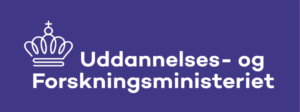
Revitalisation of our Network Group with Zoom, Mural and Excellent Facilitation
We finally got a meeting in the network again – and it was much needed! Throughout the network’s 7-year lifespan, all our
Recently, I facilitated an Ideku session with a group of professional business developers. The participants were also introduced to the Business Model Canvas by Rajiv Vaid Basaiawmoit, who is Head of Open Innovation at Aarhus University’s Centre for Entrepreneurship & Innovation. The session was arranged by Executives’ Global Network. The combination of these two tools proved to be excellent. The Business Model Canvas (BMC) includes 9 areas, and so does Ideku!
You can read plenty about the Business Model Canvas (Google has 19,6 mio hits), of course at Alex Osterwalders webpage. If you are particularly interested in insights related to other innovation methods, I strongly recommend Paul Hobcraft, who has written extensively on this topic.
The two tools serve the same purpose, that is to guide and focus your thoughts. These thoughts can have many forms:
Although all the BMC areas are pre-defined, you sometimes become lost in translation. You get stuck in what you know, and don’t develop the content enough, or your knowledge about one or more of the areas is too limited, and you tend to cut corners. It takes a lot of practice to work with the BMC, and Ideku can help you here.
The movement from the relatively free form of Ideku to the more strict BMC framework is an on-going distillation. A lot of insights seem to emerge in this process.
I have worked with BMC for years, but have never seen the connection before. But it is obvious.
If you want to carry out business development using BMC and Ideku, the following process works well:
Step 1-9 is explained in detail below
You can cover this in 20-30 minutes, and introduce the concept by showing the following video:
The Ideku process makes use of an Ideku template, and 4 easy steps:
This process is similar to the Ideku process, and works well as a conversation in small groups around a large (At least A2) BMC template.
Look at the inout, and identify the area that you find most interesting. The area should be one that you consider to be critical/pivotal to innovate your business model. In the example below, Customer Segments have been selected, since it appears to be poorly defined and of doubtful profitability.
The powerful question: How can our business model become 10x more profitable?
A good first approach here is simply to use the remains 8 BMC areas as a source of issues.
Reformulate the issues into Ideku directions.
Now you are ready to generate ideas ind inputs!
After working through the Ideku, you are almost guaranteed to have some qualified input to further substantiate your BMC.
We offer several concepts that may improve your Business Model Canvas:
Let’s hear from you, if you have any ideas or experiences that you would like to share with us.

We finally got a meeting in the network again – and it was much needed! Throughout the network’s 7-year lifespan, all our

The collaboration with Finn Kollerup was very rewarding for us. He inspired our participants to think about their everyday challenges in a new

Our task was to facilitate an efficient process and collect the results from a high-profile meeting. A special factor was that the schedule